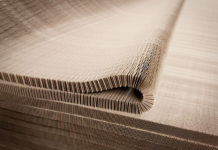Systematic class observation is actually a quantitative method of testing classroom actions from primary findings that identifies both actions or the occasions that are to become seen and the way they’re to be documented. Typically, the information that is obtained using this method focuses on the volume with which certain habits or varieties of conduct happened while in the classroom and measures their length. There are many things which are widespread to the majority of observational devices. An objective for the statement Functional definitions of all observed actions Teaching methods for experts A specific observational focus a setting a model of time An schedule The information to be recorded by a solution A method review and to process information (Stallings and Mohlman, pp. 469471) Of subjective data, investigation on effective teaching typically consisted ahead of the use of organized observational methods based on individual and historical records of successful training. To be able to develop a technological base for training, scientists started to make use of the more target and dependable methods of observation that was organized. In the last fraction of the twentieth-century, many hundred unique observational methods used and have now been designed in classes.
Extremely insightful and fascinating.
There have likewise been a huge selection of studies which have utilized classroom observation techniques. While there are many types of observational techniques or techniques which have been used-to analyze powerful training (e.g., graphs, rating machines, checklists, and narrative points), one of the most widely used procedure or study strategy hasbeen organized classroom observation based on interactive code programs. These fun coding systems allow the observer to record nearly precisely what students and academics do throughout a time span that is given. These discussion techniques are extremely objective and usually don’t demand the viewer to generate judgments or any large implications in regards to the habits they notice inside the classroom. To put it differently, these low- inference systems that are observational give distinct and simple habits that are identifiable that observers can easily signal. A number of the more commonly applied remark devices would be the Brophy- Dyadic Interaction Technique, Stallings Observation Technique, along with the Class Observation Agenda. They have all been widely-used in research studies and in educator development assignments built to improve classroom instruction. A few of the significant advantages of applying classroom observation permit tutors to do these: (1) permit experts to examine the operations of education in naturalistic controls; (2) present more descriptive and accurate data than other data solutions; and (3) stimulate change and validate that the change happened. For increasing coaching, the explanations of instructional events that are given by this technique are also observed to result in greater types and improved knowledge.
Produce a multi colored lei out-of two unique shades of crepe-paper split together.
Your final energy of the investigation process is that the studies from these observational studies have presented a coherent, nicely-substantiated knowledge-base about training that is successful. Most of the critiques and summaries of the classroom observation research, such as for instance that of Plant Walberg (1991, 1995), have consistently found that a number of classroom actions notably relate to learners’ academic success. Several facets of classroom coaching including delivering feedback and correctives, introducing new substance, completing practice, performing everyday opinions, conducting independent practice, and doing regular and weekly reviews happen to be located to be considerably linked to students’ academic achievement. To put it differently, we has been supplied by investigation using organized classroom declaration having a significant knowledgebase that’s assisted us comprehend successful training. Applications of Classroom Observation Class statement has educational purposes that are important and many valid. This area summarizes three crucial applications or locations where organized class observation continues to be widely used: (1) explanation of educational methods; (2) research of educational inequities for distinct sets of learners; and (3) enhancement of instructors’ classroom training according to feedback from specific class or faculty profiles. Explanation of instructional procedures. One of many essential functions of classroom observation research is conveying the existing reputation of educational routines and determining problems that are educational. As it is put by Ben Superior, “one role of observational study will be to summarize what takes place in classrooms as a way to determine the complex functional problems that address providers” (r.
Skip seven:??she has time tables that are regular and need to do spelling assessments.
337). There were many observational reports that have been created specifically to describe particular instructional phenomena. Largescale observational reports such as Waxman and Sirotnik, Shwu- Padron, and Huang, for instance, have analyzed instructional practices in basic schools. Sirotnik analyzed elementary 1,000 and secondary classes and found that there was almost no selection in teaching practices across grades and themes. He discovered that class time’s majority was invested sometimes with all the teacher lecturing for the school or learners taking care of projects that were written. Waxman and Padron noticed ninety sixth-grade eighth-grade and sessions from sixteen inner city level universities that were middle and located results that were similar to those of Sirotnik. Pupils were generally involved with whole-school instruction rather than interacting with editing college essays possibly other individuals or their tutor. Their very own instructional actions were rarely chosen by individuals, and they were usually hardly active within the class, typically only enjoying or hearing the tutor, despite the fact that they certainly were found to become about 94 percentage of times on undertaking.
Provide excitement to group jobs and inspire others to develop suggestions.
The teacher observation outcomes revealed that academics generally dedicated to the information of the task answered to students’ signals, proclaimed the techniques of the duty, and checked students’ function. Educators were discovered spending almost no time reaching students regarding individual issues, reassuring students to succeed, displaying private respect for students, and exhibiting curiosity about students’ work.








